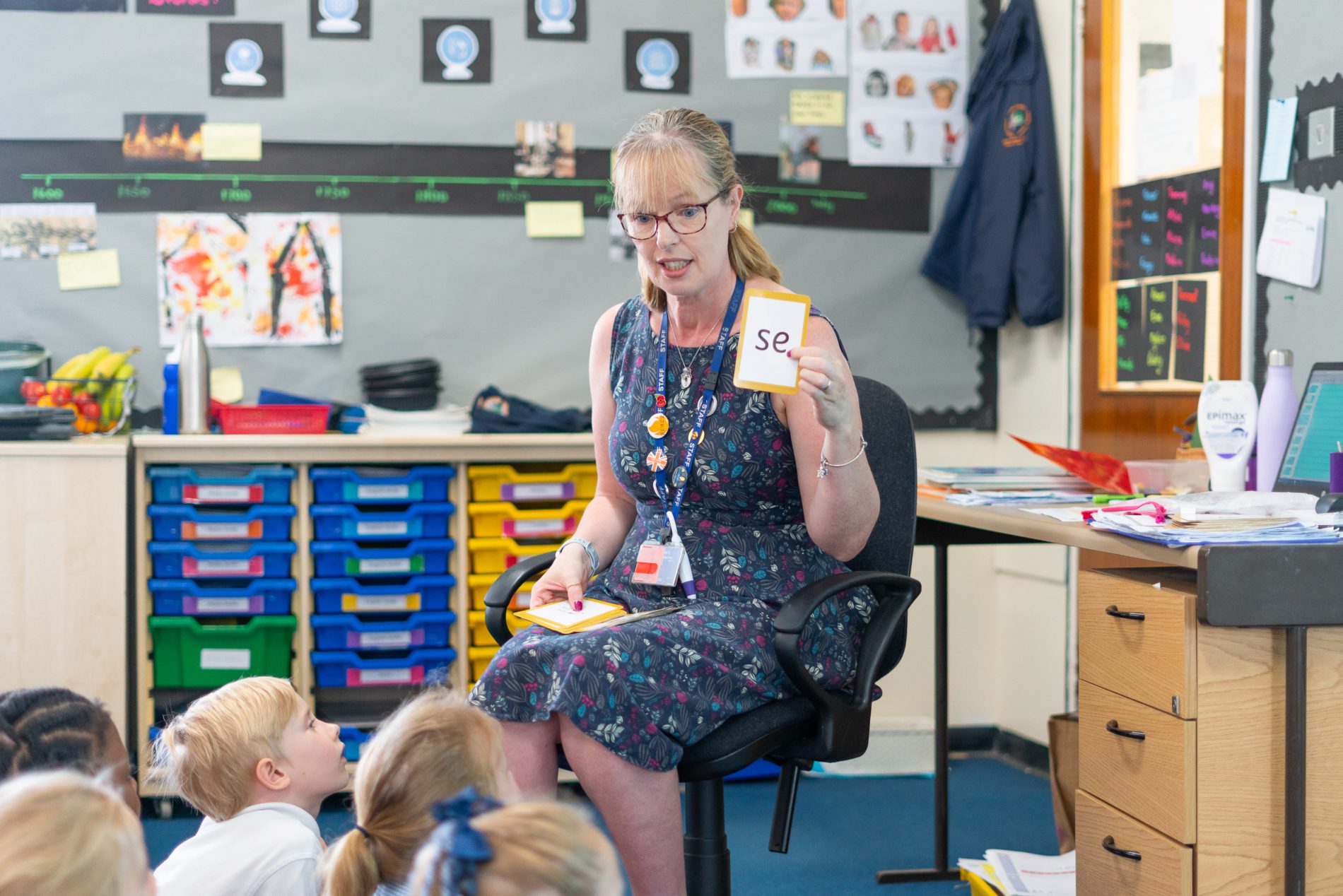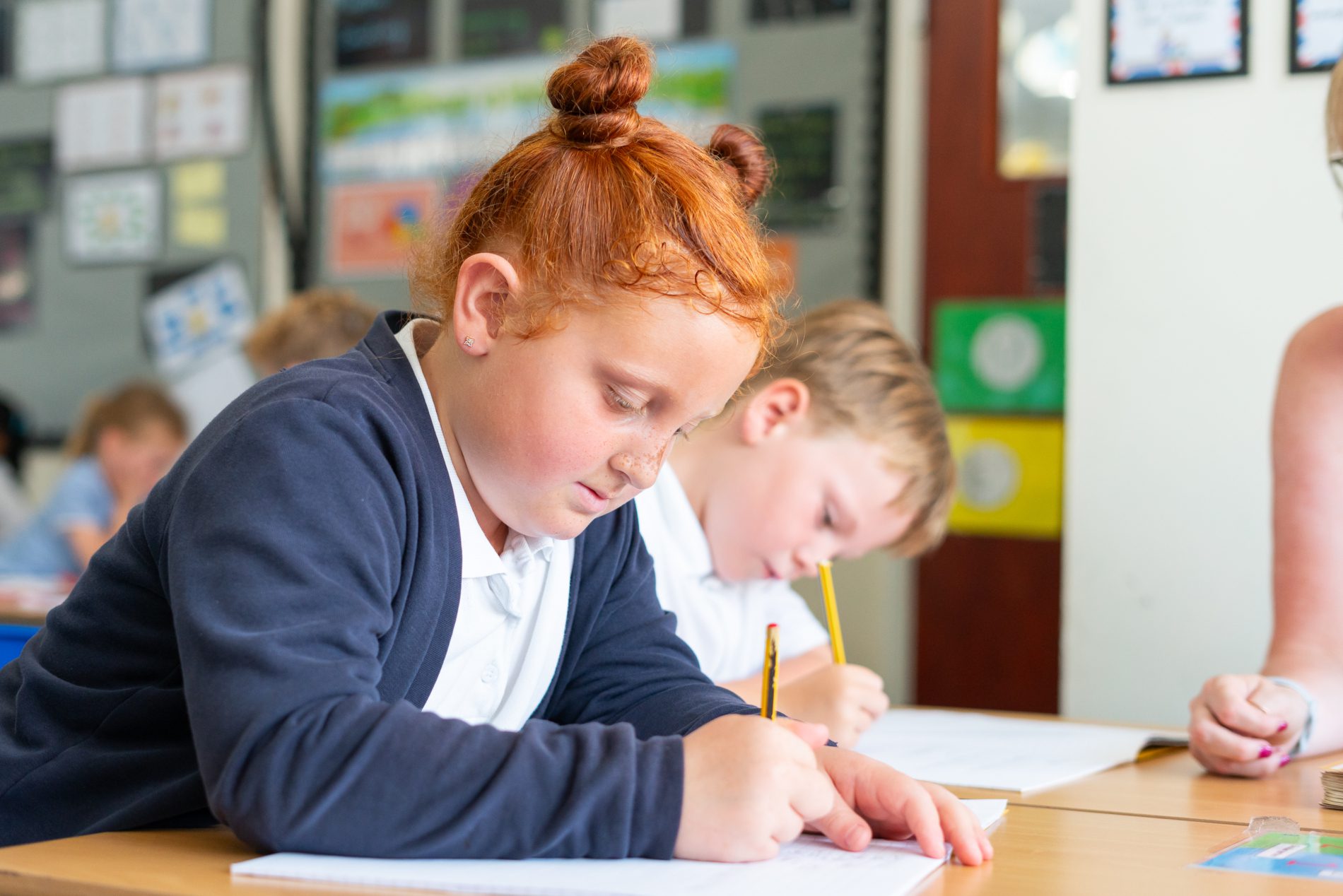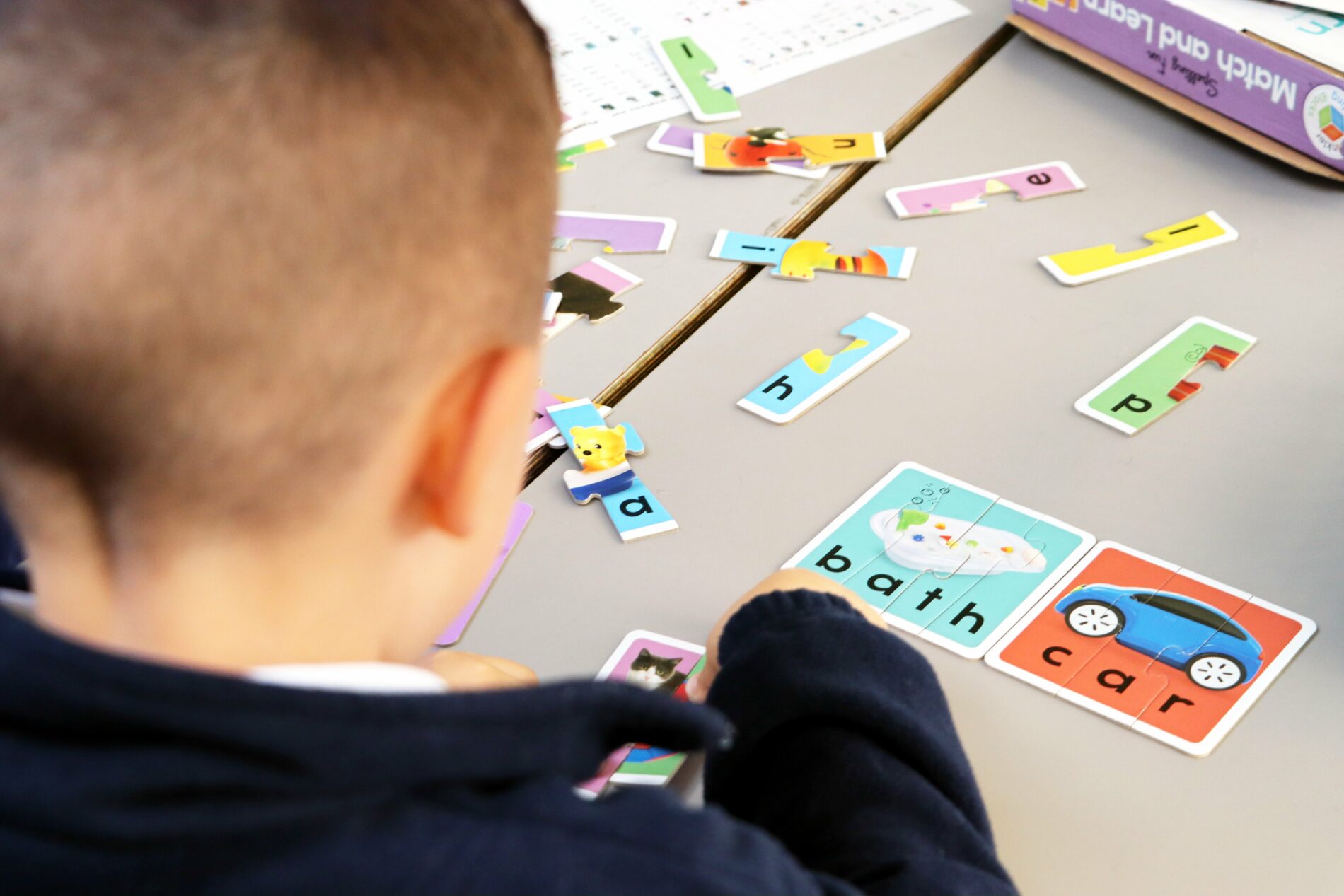Phonics Subject Leader: Mrs S Thomas
At Sutton-at-Hone Primary School Phonics is taught using the structure of our systematic synthetic programme ‘Little Wandle Letters & Sounds’.

Intent
At Sutton-At-Hone we aim to teach every child to read while also teaching every child to love reading. Phonics in reception is where their reading journey starts. We start by teaching the children that the letters of the alphabet represent different sounds and that these can be used in a variety of combinations and are put together to make words. We follow the Little Wandle progression which moves them quickly yet thoroughly through the scheme to create fluent readers. Once the children can read a book fluently then they are able to start understanding the story or content and are able to start answering questions about the book.
Our lessons are designed to meet the children’s needs based on our ongoing phonic assessments. Children who are not keeping up with their peers will be given additional practice immediately through keep-up sessions.


Implementation
Phonics can be split into five phases and by the end of reception the children have been taught to the end of phase 4. By the end of year 1, children will have been taught up to the end of phase 5.
Phonics is taught daily from the beginning of Reception and this continues into Year 1. Using the Little Wandle Letters
& Sounds lesson structure, each session will follow the same format of introducing, revisiting and reviewing, teaching, practising and applying.
From Reception, children will learn 4 new GPC’s (sounds) a week and will revisit what they have learned on a Friday. This model continues into Year 1. Each lesson the children will work on segmenting and which are key skills in early reading.
In Y2-Y3, phonics lessons are taught daily to children where appropriate – following the model of Little Wandle but plugging specific gaps identified through assessment.
Reading practice sessions
Along with the daily phonics lessons the children will also participate in Reading practice sessions. The book that each child is given is carefully matched using the assessment data from the termly assessments. Each reading practice session has a clear focus so that the demands of the session do not overload the children’s working memory. The children will focus on three key reading skills during these sessions.
- Decoding the children use their phonics knowledge to sound out and read the words.
- Prosody the children will learn to read with expression, showing that they understand the story and the punctuation.
- Comprehension once children can read the book fluently they are then asked to find information from the text or find the answer to simple questions about the story.
Reading throughout the day
Throughout the day children are exposed to a wide variety of stories, rhymes, poems, songs and non-fiction books to ensure that the children are accessing wide variety of language and literature beyond what they can read themselves.
Impact
Our children will be able to:
- Make progress in line with Year group expectations.
- Read appropriate books fluently.
- Any children who are not making appropriate progress are identified quickly and extra support put in place.
- Use their phonics knowledge to tackle reading and spelling unfamiliar words.
- Become increasingly independent in the reading and writing processes.

SEND Information
Our SEND and disadvantaged pupils are given the necessary support in class to fully access the supported Phonics curriculum. Learning is adapted where necessary to support SEND/EAL pupils to give equal opportunities for all to be confident in approaching any problems faced. Interventions, support and challenges are constantly revised and adapted to ensure all children are supported in achieving learning.
Phonics Assessments
Phonics Screening Check
Children in Year 1 throughout the country will all be taking part in a Phonics Screening Check in June. Children in Year 2 will also take the check if they did not achieve the required result when in Year 1 or if they have not taken the test before. The phonics screening check is designed to confirm whether individual children have learnt phonic decoding and blending skills to an appropriate standard.
What Happens During the Screening?
Children will work 1:1 with a familiar adult be shown 40 words, some real words such as ‘trapeze’ and some ‘alien words’ such as ‘splerg’. They read each word and the overall score is recoded. The pass mark for the 2022-2023 screening was 32/40.
Progression Documents
Home Learning
Phonic books will be sent home. Teachers will put the GPC’S the children have learnt in their Phonic sessions, in their Phonic Books, for the children to take home. Regular practice of these GPC’s will support your child in their reading and writing.

